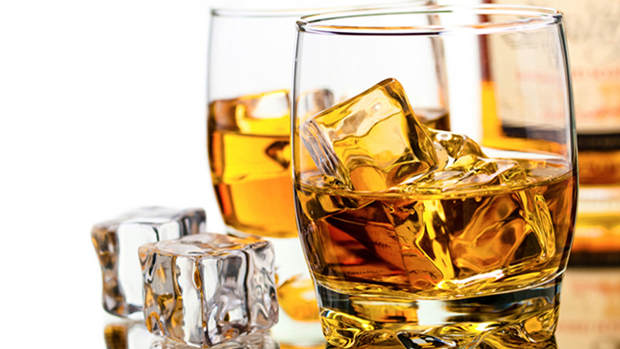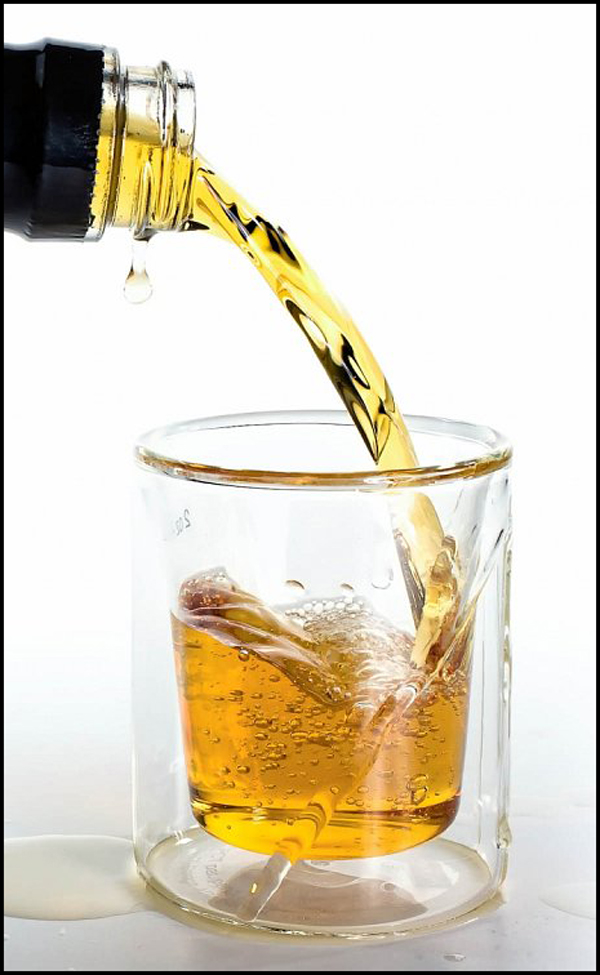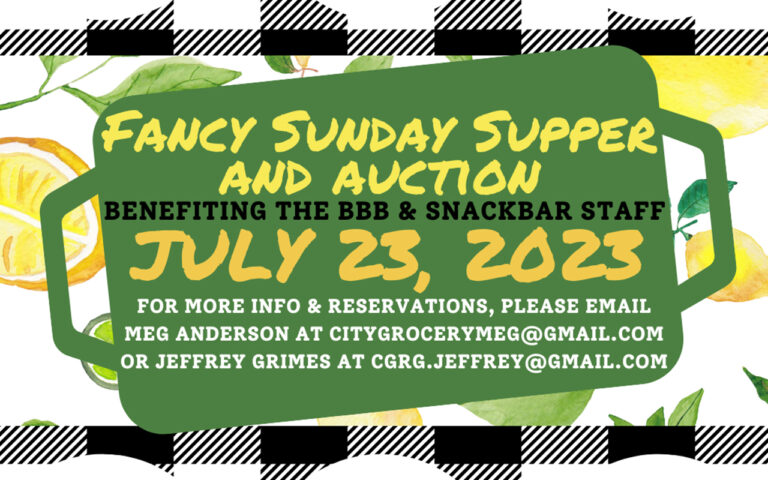
Part of being a good bartender is knowing how to interpret your customers’ wishes, sometimes by reading between the lines of what they say and what you know they truly want. These things come into play quite often when the subject of whisky/whiskey comes up. Whisk(e)y’s most basic definition is any spirit made from grain that is ground into grist, then cooked with water to release starches. Malt is added to convert the starch into sugar, and then yeast to begin the fermentation. Japanese, Canadian, and Scottish varieties are “whisky.” If produced in any other country, it is “whiskey.”
Because I live and work in the south, if a patron comes to me and asks for a whiskey and coke, I’m not going to ask any questions. I’m just going to grab the well bourbon and start pouring. But if someone asks for a whiskey neat or on the rocks, then immediately a few questions are going to come to mind. “Do they mean scotch? Irish whiskey? Bourbon or straight or sour mash? Canadian or rye?” Most of the time, they will have an affinity for a certain brand and will let you know what they need quickly. But it is good to know the differences between the various types in case they need a recommendation.
 The earliest whiskies introduced to the world came from Ireland, with Scotland close behind. The word “whiskey” is even derived from the Gaelic uisge beatha, which means “water of life.” Usige beatha (pronounced “wish-ga ba-ha”) was abbreviated to “uiskie” in the late 1600s. The term “whisky” first appeared in 1736. Scotch is still one of the most tightly regulated and oldest spirits. In order to be legally called a “scotch,” the spirit must be produced in Scotland and aged in an oak barrel for at least three years. Cheaper, blended scotch whiskies might be made from grain and will be labeled as such, but the more traditional and higher end scotch will be made from malted barley that has been roasted over a peat moss fire. It is the peat moss that gives scotch its characteristic smokiness. Japanese whisky follows this process almost exactly but cannot be called Scotch because it doesn’t actually come from Scotland.
The earliest whiskies introduced to the world came from Ireland, with Scotland close behind. The word “whiskey” is even derived from the Gaelic uisge beatha, which means “water of life.” Usige beatha (pronounced “wish-ga ba-ha”) was abbreviated to “uiskie” in the late 1600s. The term “whisky” first appeared in 1736. Scotch is still one of the most tightly regulated and oldest spirits. In order to be legally called a “scotch,” the spirit must be produced in Scotland and aged in an oak barrel for at least three years. Cheaper, blended scotch whiskies might be made from grain and will be labeled as such, but the more traditional and higher end scotch will be made from malted barley that has been roasted over a peat moss fire. It is the peat moss that gives scotch its characteristic smokiness. Japanese whisky follows this process almost exactly but cannot be called Scotch because it doesn’t actually come from Scotland.
Scotch is classically divided into five regions, but nowadays it is more common to simply talk about whether it is an inland scotch or an island scotch. The most famous island scotch comes from Islay in the southwest and has extremely powerful notes of peat moss smoke, salt, and iodine. Some describe the flavor as medicinal. Inland scotch is usually slightly smoother, the smokiness will be less pronounced, and there might even be some fruity notes to the liquor. While most scotch is aged in used bourbon barrels shipped from the United States, some scotch is aged in used sherry barrels instead, which can impart those fruit flavors I mentioned.
Irish whiskey is similar to scotch in many ways, but has much looser regulations controlling its production. This results in a much broader range of product. While there are some high end Irish whiskies out there, for the most part Irish whiskey deals more in blends and large batches. While malted barley is the usual base for the spirit, and it also must be aged at least three years in a wooden barrel, unlike Scotch, Irish distillers might also throw rye, oats, or other whole grains into their mash for added spice and complexity. Another fundamental difference between scotch and Irish whiskies is that Irish malts are almost never smoked. Because of the lack of the smoking process, and the larger batches in which Irish whiskey is made, it is normally considered to be milder and softer than its Scottish cousin.
If scotch is the most tightly regulated of the whiskies, bourbon is a close second. Though bourbon was first produced in Bourbon County Kentucky, Bourbon County actually has no working distilleries currently. Bourbon can come from any state in the US as long as certain guidelines are followed: it must me aged a minimum of two years in a freshly charred oak barrel, its mash must contain no less than 51% and no more than 80% corn with the rest comprised of barley and either wheat or rye, and it will first be distilled in a large, continuous still before being distilled a second time in a kettle-like contraption known as a “doubler” or, sometimes, a “thumper.” Because of the call for fresh barrels with each batch of bourbon, there is a large business of exporting used barrels to other countries.
Because the guidelines are so rigid, there are many whiskies made that, while very similar to bourbon, have to go by different names because of slight deviations from true bourbon recipes. Jack Daniels is considered  a straight whiskey, all because it is run through a charcoal filter before bottling. Sour mash whiskies use a little bit of mash from the last batch to kick start fermentation in the next batch. Rye whiskies use a mash predominantly made of rye instead of corn, making it a much spicier spirit. Corn whiskey (think moonshine) follows all the same rules as bourbon, but has to have a mash of 80% corn, and might not ever see the inside of an aging barrel, giving it a clear appearance. Canadian whiskey follows practically no guidelines except that it must be made in Canada and aged for three years. That’s it. It can be corn, or rye, or barley, or something else entirely. One can even find bottles of Canadian whisky, made 100% of corn, and labeled as “rye whisky.” And, while it is quite normal to see single malt and small batch bourbons, the Canadian whisky market is almost entirely comprised of blends.
a straight whiskey, all because it is run through a charcoal filter before bottling. Sour mash whiskies use a little bit of mash from the last batch to kick start fermentation in the next batch. Rye whiskies use a mash predominantly made of rye instead of corn, making it a much spicier spirit. Corn whiskey (think moonshine) follows all the same rules as bourbon, but has to have a mash of 80% corn, and might not ever see the inside of an aging barrel, giving it a clear appearance. Canadian whiskey follows practically no guidelines except that it must be made in Canada and aged for three years. That’s it. It can be corn, or rye, or barley, or something else entirely. One can even find bottles of Canadian whisky, made 100% of corn, and labeled as “rye whisky.” And, while it is quite normal to see single malt and small batch bourbons, the Canadian whisky market is almost entirely comprised of blends.
While all whiskies may share some common traits, the end results can be wildly different. They can be sweet and smooth, peppery and robust, smoky and salty, and everything in between – and they can all be delicious. I’ll leave things with a cocktail recipe for a northern take on southern standard: the New York whiskey sour. To make it, one simply needs two ounces of whiskey (rye or bourbon is normal), one ounce of simple syrup, and one ounce of simple syrup. The mixture should be shaken, served on the rocks, and finished with a splash or red wine on top. Not only does the red wine cause the cocktail to look quite beautiful, but it adds a dimension to the standard whiskey sour that is quite
delicious. ![]()
–
This article was originally printed in The Local Voice #214 (published October 9, 2009).
To download the PDF of this issue, click here.



